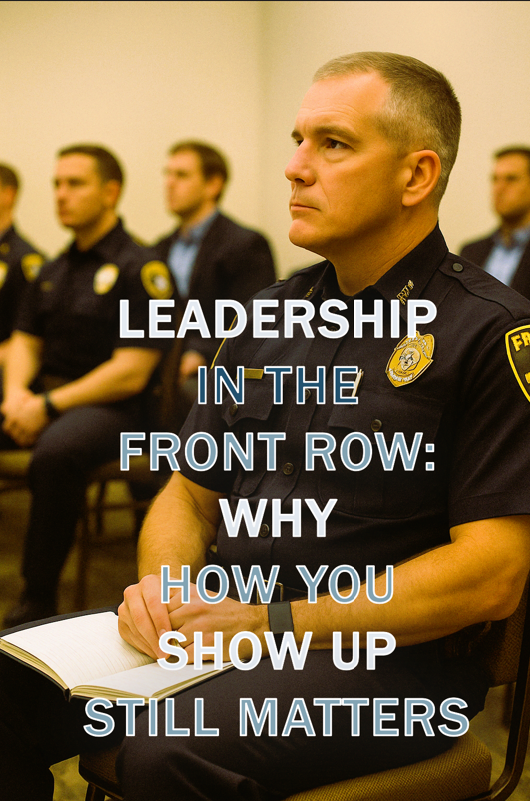Leadership in the Front Row
Leadership in the Front Row

I’ve sat through more trainings and conferences than I can count. Some were forgettable. Some were career-changing. But in almost every room, one thing always stood out before a single word was spoken: how people showed up. You can learn a lot about a person—and their agency—just by where they sit, how they’re dressed, and whether they act like being there matters.
When you wear the badge—especially when you wear rank—you represent more than just yourself. You represent your agency, your officers, and our entire profession. This isn’t limited to patrol shifts or community events. It applies whenever you walk into a training session, a conference, or a professional development course.
And one of the most visible ways we set the tone? Our presence—how we look, how we act, and where we sit.
Let’s start with a simple but telling question:
Where do you sit when you walk into a training room?
Are you in the front, leaned in, notebook open, ready to engage?
Or are you in the back, scrolling emails, arms crossed, waiting for it to be over?
Where you sit reflects more than your seating preference. It reflects your attitude—and your example. And as leaders, we don't have the luxury of being passive attendees. We are constantly setting the tone, whether we mean to or not.
Appearance plays into this as well. No one’s asking you to wear Class A’s to a legal update. But there’s a big difference between looking sharp in a department-branded polo and arriving in flip-flops and a wrinkled t-shirt. Every time you attend a professional function, you represent your agency’s standards. Like it or not, how you show up reflects what you value and tolerate.
We’ve all seen it. Two officers walk into the same room:
- One looks squared away and engaged.
- The other is distracted, dressed down, and checked out.
Guess which one leaves an impression on the instructor, the vendor, and the neighboring agency?
More importantly, guess which one the young officers will imitate?
Professionalism isn’t a uniform we wear when the public is watching. It’s a mindset. And it starts with us. Officers watch their leaders more closely than we think. They don’t need a memo to understand expectations—they follow what we model.
Too often, we treat training like throwaway time. A chance to relax, disengage, or catch up on admin work in the back of the room. But if you’re collecting a paycheck to be there, especially on duty, the expectation should be clear: represent the department. Represent the profession. Engage, ask questions, stay sharp.
This isn’t about being rigid. It’s about setting a tone that says: "We take this job seriously—even when no one’s watching."
If you're a chief, captain, or sergeant, make a conscious decision to sit in the front. Be the example. Show officers what leadership looks like when no one's requiring it.
Because in today’s environment, professionalism isn’t optional—it’s essential. Not for optics. Not for ego. But for culture. For legacy. And for the people coming up behind us who are watching more than they’re listening.
So when you walk into that room, lead with presence. Dress like it matters. Sit like it matters. Engage like it matters because it does.
And above all else, remember where you came from.

